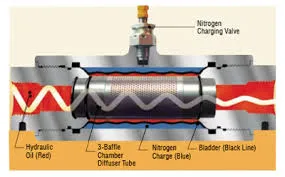Nov . 12, 2024 06:52 Back to list
hydraulic cylinder pins product
Understanding Hydraulic Cylinder Pins Essential Components for Enhanced Performance
Hydraulic systems are integral to many machines and equipment across various industries, from construction to manufacturing. Among the myriad components that contribute to their effective operation, hydraulic cylinder pins play a crucial role. Understanding their function, types, and applications can significantly enhance the performance and reliability of hydraulic systems.
What Are Hydraulic Cylinder Pins?
Hydraulic cylinder pins are specialized fastening devices used to secure hydraulic cylinders in place. They allow for the pivoting and movement of hydraulic components while ensuring stability and strength. These pins are typically designed to withstand high loads and extreme environmental conditions, making them essential for the safe and effective operation of hydraulic systems.
Key Functions of Hydraulic Cylinder Pins
1. Connection and Support Hydraulic cylinder pins facilitate the connection between different hydraulic components, such as cylinders and booms, arms, or other structural elements. They support the load and enable smooth movement, allowing machinery to perform various tasks efficiently.
2. Articulation The design of hydraulic cylinder pins allows for freedom of movement. This articulation is vital in applications where flexibility and precision are required, such as in cranes, excavators, and other heavy machinery.
3. Load Distribution A well-placed hydraulic cylinder pin distributes loads evenly across the attached components. This feature minimizes stress concentrations and reduces the risk of mechanical failure, thereby extending the lifespan of the machine.
Types of Hydraulic Cylinder Pins
Hydraulic cylinder pins come in various types, each designed for specific applications and load requirements. Here are some common variants
1. Solid Pins These pins are made from a single piece of material and provide robust support for heavy loads. Solid pins are often used in high-stress environments.
2. Hollow Pins Hollow pins are lighter and can be used in applications where weight is a concern. They may also incorporate features such as oil passageways for lubrication.
3. Tapered Pins Tapered pins are designed to be inserted into a hole that matches their shape. They provide a tight fit and are often used in applications requiring precise alignment.
4. Locking Pins These pins come with additional features that prevent them from loosening or falling out during operation. Locking mechanisms can include spring-loaded devices or cotter pins.
hydraulic cylinder pins product

Applications of Hydraulic Cylinder Pins
Hydraulic cylinder pins find applications across various industries due to their versatility and strength. Some notable applications include
- Construction Equipment Hydraulic cylinder pins are essential in backhoes, bulldozers, and cranes, facilitating the movement of arms, buckets, and other attachments.
- Manufacturing Machinery In assembly lines, hydraulic systems control various operations, requiring reliable pins to maintain efficiency and safety.
- Agricultural Equipment Tractors and harvesters utilize hydraulic systems for lifting and moving heavy loads, with cylinder pins ensuring smooth operation.
- Automotive Industry Hydraulic cylinder pins are used in various automotive applications, including lifts and presses, enabling precise movements in manufacturing processes.
Selecting the Right Hydraulic Cylinder Pin
When selecting hydraulic cylinder pins, several factors must be considered
1. Load Capacity Ensure the pin can withstand the expected loads and forces during operation.
2. Material Pins should be made of durable materials such as steel or alloy that resist wear and corrosion.
3. Dimensions Proper sizing is critical to ensure a secure fit and prevent mechanical failure.
4. Environment Consider environmental factors, such as exposure to chemicals or extreme temperatures, which may affect the pin's performance.
Conclusion
Hydraulic cylinder pins are vital components that enhance the efficiency and reliability of hydraulic systems. Understanding their functions, types, and applications can help industries optimize machinery performance and reduce maintenance costs. By selecting the appropriate hydraulic cylinder pins for specific applications, businesses can ensure the longevity and effectiveness of their hydraulic systems, ultimately leading to increased productivity and safety in operations.
-
Pallet Truck Power Units: Smart Logistics Solutions
NewsAug.01,2025
-
1.5 Ton Lifting Cylinder - Hebei Shenghan | Heavy-Duty Hydraulic Solutions
NewsAug.01,2025
-
1.5 Ton Lifting Cylinder 70/82-40-290-535 - Hebei Shenghan | Heavy-Duty Lifting, Precision Engineering
NewsAug.01,2025
-
1.5 Ton Lifting Cylinder 70/82-40-290-535-Hebei Shenghan|Hydraulic Lifting Solutions
NewsAug.01,2025
-
Double Acting Power Unit with GPT-4 Turbo | AI Hydraulics
NewsJul.31,2025
-
1.5 Ton Lifting Cylinder-Hebei Shenghan Hydraulic|Heavy-Duty Lifting,Custom Hydraulic Solutions
NewsJul.30,2025
